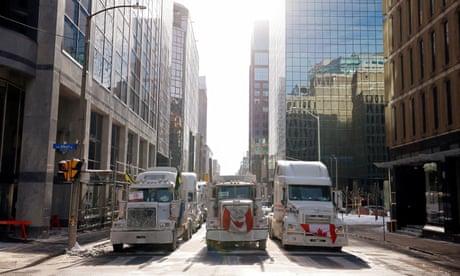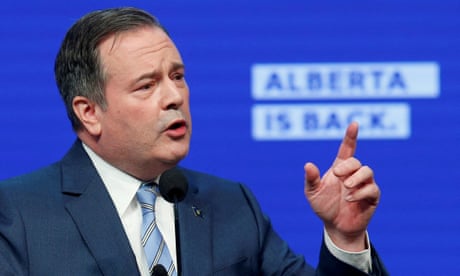
Craig Lord -
Canada’s move to ban technology from Chinese vendors Huawei Technologies and ZTE from its 5G networks will have a bigger impact on smaller players in the telecom industry than the biggest carriers and could end up costing Canadians more on the wireless bills, observers say.
Innovation Minister Francois-Philippe Champagne announced late Thursday afternoon that Huawei’s tech cannot be used in the eventual development of these networks and that any such infrastructure already in place must be torn out.
Read more:
Why is Canada banning Huawei from 5G? Here’s what to know
That includes both 5G and the current-generation 4G networks, with operators given until 2027 to remove tech already in place. Huawei gear sold to Canadian telecoms includes components that allow mobile phones to connect to networks, for example.
Champagne said the government will not reimburse companies for these costs.
Putting the onus on carriers to strip their existing infrastructure of anything Huawei-made is going to hurt small companies providing vital service to Canadians living in remote and rural areas, says Samer Bishay, CEO of Ontario-based communication services company Iristel.
He says there’s “quite a bit” of Huawei technology across the 4G and earlier generation networks of Iristel and its subsidiary ICE Wireless, which provides wireless service to areas of Canada’s far north.
Huawei tech is largely cheaper than that of competitors Ericsson or Nokia, and it also endures well the harsh conditions of the Canadian North, Bishay says.
Deep-pocketed telecoms are more easily able to afford high-end equipment and replace it on a regular basis, he argues, while smaller players try to stretch the life cycles of their tech and save pennies.
“Guys like the incumbents — Bell, Rogers, Telus — it won't really make much of a difference for them. What it really hurts are the regional and small operators such as ICE Wireless,” he says.
The Huawei decision is a long time coming for Canada’s telecom industry, with partners such as the United States implementing bans on domestic firms doing business with the vendor back in 2019 while Canadian policymakers deliberated.
A 2021 Global News analysis showed that Canadian telecom companies spent $700 million on Huawei equipment for their networks while the government mulled the ban.
Although some of Canada's wireless providers had originally planned to work with Huawei, they had already backed away from the partnership in anticipation of the federal government's decision. In 2020, BCE Inc. (Bell) and Telus Corp. announced they would be working with Sweden's Ericsson as a supplier for their 5G networks.
Read more:
China will see Canada’s Huawei, ZTE bans as ‘a slap in the face,’ experts warn
Global News reached out to Bell and Telus — companies believed to have a significant amount of Huawei technology embedded in their existing networks — on Friday to get their reaction to the ban but did not hear back.
Rogers Communications told Global News the decision has “no impact” on its 5G deployment, which it’s developing with partner Ericsson.
Shares of the three telecom giants saw little movement on the markets Friday.
Shruti Shekar, a journalist with Android Central who’s followed the Huawei decision, tells Global News that large telecom companies struck deals with premium suppliers instead of waiting for a decision on Huawei because further delay would have put Canada’s 5G development further behind other markets such as the U.S. and South Korea.
But Canada’s delay in making a decision on the issue likely hurt smaller providers in northern and remote communities who took a chance on using the Chinese tech.
“If the government had made a decision sooner, then those smaller players could have figured out a different, alternative route … instead of already placing out all of that infrastructure in those northern communities,” she says.
“They're going to have to rip it up and that's not cheap. That's not going to be an easy task.”
Pushing Canadian telecoms big and small to expedite the replacement of fully-functioning technology will ultimately see Canadians pay more on their internet and phone bills, Bishay argues.
“I can assure you, it’s never the operator who pays for it. Even us as a smaller operator will always pass any type of increased cost or anything to the consumer,” he says.
Shekar is more uncertain about how the Huawei ban will hit consumers, but says prices going up is not out of the question.
“To offset the costs that they're going to have to incur now, there is a possibility that prices of your cell phone bills could go up, prices for internet services could go up again. It's a little too soon to say, but it's definitely a possibility,” she says.
Champagne framed the Huawei ban as a matter of not just business, but of national security, in his announcement Thursday. Critics of allowing Huawei into Canada’s 5G networks have pointed to Chinese government policy requiring corporations to spy for them if asked as a cybersecurity risk.
A spokesperson for China’s embassy in Canada said late Thursday the alleged security concerns were a “pretext for political manipulation” and accused Canada of working with the United States to suppress Chinese companies.
“China will make a comprehensive and serious assessment of this incident and take all necessary measures to safeguard the legitimate rights and interests of Chinese companies,” the spokesperson added.
Many believe the government delayed its 5G decision because of the dispute surrounding China's imprisonment of Michael Spavor and Michael Kovrig following the RCMP's arrest of Huawei executive Meng Wanzhou.
Bishay acknowledges the political and security risks with Huawei, but says operators did not need a government edict to make secure choices for building 5G networks. But in the modern cybersecurity landscape, vulnerabilities are not limited to a single nation's tech exports, he argues.
“No network operator is going to want to have any piece of equipment if they know it's sending data back to somewhere else that is not authorized. But the technology now is so advanced that no matter how sophisticated or who your suppliers are, whether it's American or German, you are still vulnerable. And it happens,” he says.
“It's not about fixing one issue. It's about fixing an ecosystem. And that's really what we should be after.”
— with files from Global News's Anne Gaviola, Alex Boutilier, Amanda Connolly and the Canadian Press

















